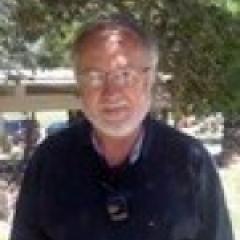Practicing What They Preach: Science Teacher Educators Return to School
In a forthcoming book, 25 science teacher educators describe their experiences after returning to teach students in K-12 public schools and informal settings. Science Teacher Educators as K-12 Teachers: Practicing What We Teach was edited by Michael Dias, professor of biology and science education, Kennesaw State University (Georgia), Charles J. Eich, professor of science education, Auburn University, and Laurie Brantley-Dias, professor of instructional technology, Georgia State University. The book will be published early in 2013 by Springer Publishers.
I was asked to write the last chapter of the book, and my comments here are based on reading the pre-published manuscripts, and content of the chapter that I wrote.
In the current era of reform, teacher education has been thrown under the bus, especially by the U.S. Department of Education. Education policy and practice are being radically transformed in American education, and teacher preparation programs in colleges and universities are being pressured to fall in line with the marketization and privatization of K-12 schools. In teacher preparation this is clear by looking at proposals to privatize or deregulate the education of teachers, in the increasing reductive entry and exit tests for prospective educators, in differential funding to those teacher preparation institutions whose students score higher on high-stakes examinations, and the increasing growth of home schooling because of various reasons, but perhaps the wish to reject formal schooling and indeed professionally educated teachers (Please see Michael Apple’s chapter entitled Is deliberate democracy enough in teacher education?, 2008).
One of the most important ideas that I took away from these narratives is how the professional images of these science educators changed because they were willing to take risks, and work in a culture that was very different from the one given by academia. In crossing cultures from academia to public school and informal science settings, these professors put themselves in the environment of teachers, who in a way were more knowledgeable about the practice of teaching science than they were.
I found richness in these reports, as well as creativity, and above all else, there was courage as shown by these teacher educators’ willingness to leave the safety of university life and immerse themselves in the world of K-12 classrooms Many of the authors took this step to find out how it feels to be back in a school in today’s classroom, and how this experience might affect their work as teacher educators. Trying out progressive teaching strategies such as inquiry-based, the radical idea of helping students construct their own ideas, and problem-based approaches was a central goal of most of the authors. They also hoped that thoughtful reflection of their experience through the writing and critique of their chapters in this book would give the assuredness and self-confidence to change their views and impact their university colleagues and their students.
But not everything which was reported was rosy. And this is why these reports have such credibility. Most of these professors had strong background in science and how to teach science. But every one of them had problems when they entered the classroom. Some professors left university life and took jobs in secondary schools, thinking that this would be a permanent career change. Others took leaves of absence and taught either one or two semesters in a K-12 school. Another group, while remaining at their university post, took time weekly to teach in a local school. And the last group taught in more informal settings, such a camps or summer school.
Why did these professors decide to do this and then write about their experiences? Some of them indicated that they want to improve their “street cred” with their teacher education students who sometimes would make comments such as “How can you teach us anything about teaching science when you haven’t been in a classroom for years?” Other professors wanted to find out how progressive teaching ideas such as inquiry-based learning would actually work in the classroom. Many of the professors were successful here, but even the ones that were successful had to make constant changes, and get help from teachers and colleagues. Still, other professors simply wanted to work with children and youth and experience again why they decided to become teachers in the first place.
I’ll tell you more about these fascinating experiences in the coming weeks. For now, I simply wanted to let you that this book is coming along, and that there are teacher educators that are trying to reform education from the inside-out, rather than the top-down corporate and conservative model that is strangling K-12 schools, and teacher education.
If you are teacher educator, what was your most recent experience teaching K-12 about? How did it work out?
This blog post has been shared by permission from the author.
Readers wishing to comment on the content are encouraged to do so via the link to the original post.
Find the original post here:
The views expressed by the blogger are not necessarily those of NEPC.
